The Arabic letter Ghain (غ) is one of the distinctive letters in the Arabic alphabet. It is characterized by its deep, guttural pronunciation and the single dot above it, which differentiates it from its similar counterpart, the letter Ain (ع). The shape of Ghain changes depending on its position in the word, which makes it essential for students to master the forms of the letter Ghain at the beginning, middle, and end of words—whether connected or standalone. In this educational lesson, we will explore the forms of the letter Ghain along with practical examples that simplify the learning process and enhance reading and writing skills.
Letter Ghain exercises for children
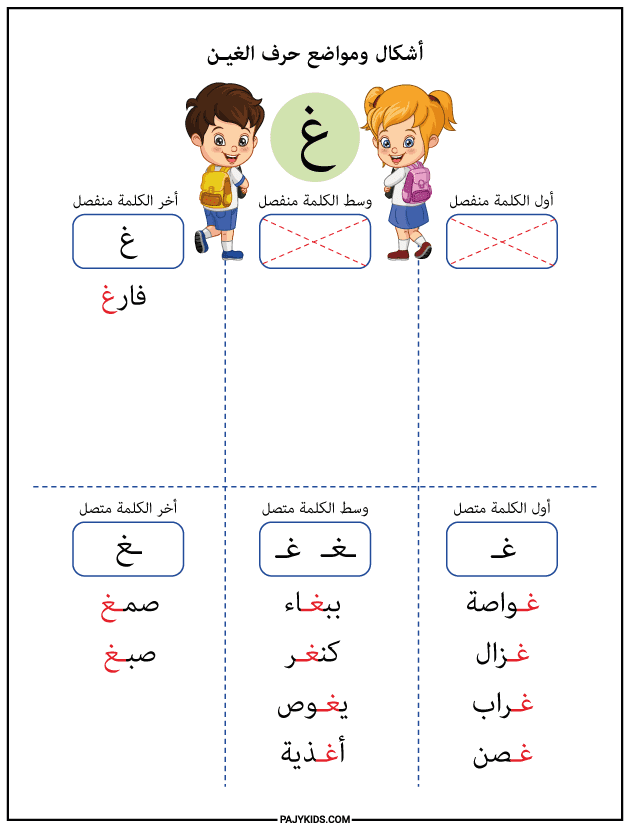
- The Form of Ghain at the Beginning of a Word
When Ghain appears at the beginning of a word, it connects only to the letter that follows and is written like this: “غـ”.
Examples: Ghawwasa (submarine), Ghazal (gazelle), Ghurab (crow).
This form starts with a distinct curve from right to left and is marked by a single dot above, which differentiates it from Ain. This is one of the most recognizable forms of the letter Ghain, and students should learn it early in their Arabic writing journey.
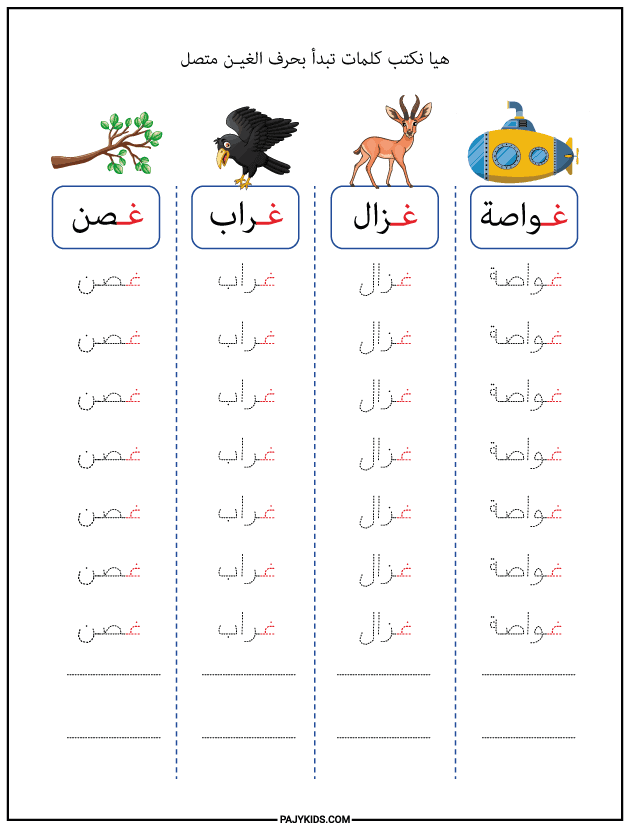
- The Form of Ghain in the Middle of a Word
When Ghain appears in the middle of a word, it connects to both the letter before and after it and takes the form: “ـغـ”.
Examples: Babgha’ (parrot), Kanghar (kangaroo), Yaghus (he dives).
In this position, the letter blends smoothly with surrounding letters, and the dot above it remains clearly visible. Students must practice this form frequently, as it is one of the most common forms of the letter Ghain in everyday Arabic.
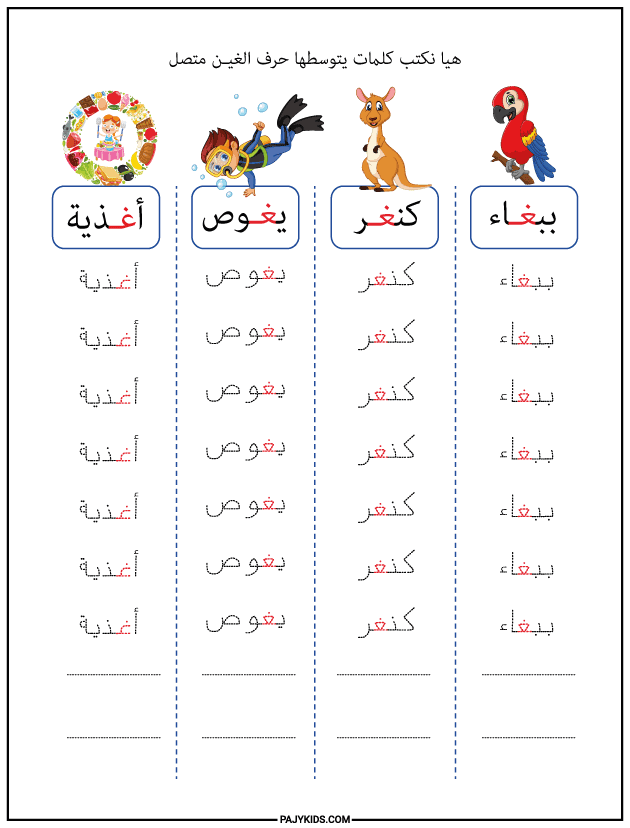
- The Form of Ghain at the End of a Word (Connected)
When Ghain comes at the end of a word and is connected to the preceding letter, it is written like this: “ـغ”.
Examples: Samgh (glue), Sabgh (dye).
The letter extends horizontally along the line, displaying its characteristic curve and the dot above. This position helps students understand the progression and shape of Ghain throughout a word.
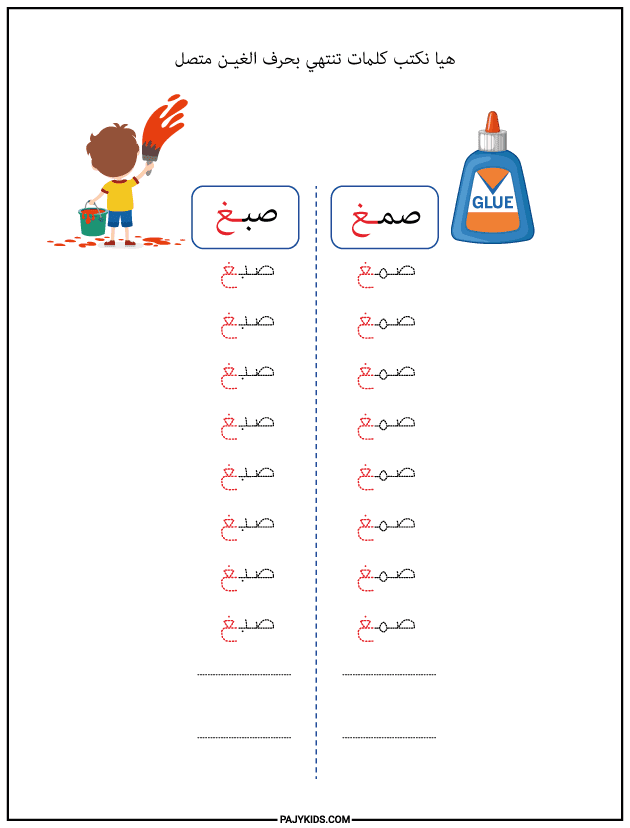
- The Form of Ghain at the End of a Word (Isolated)
If Ghain appears at the end of a word after a letter that does not connect to it, it is written in its isolated form: “غ”.
Examples: Dimagh (brain), Farigh (empty).
In this position, Ghain appears independently on the line, maintaining its curved shape and top dot, making it visually easy for learners to recognize and distinguish it from similar letters.
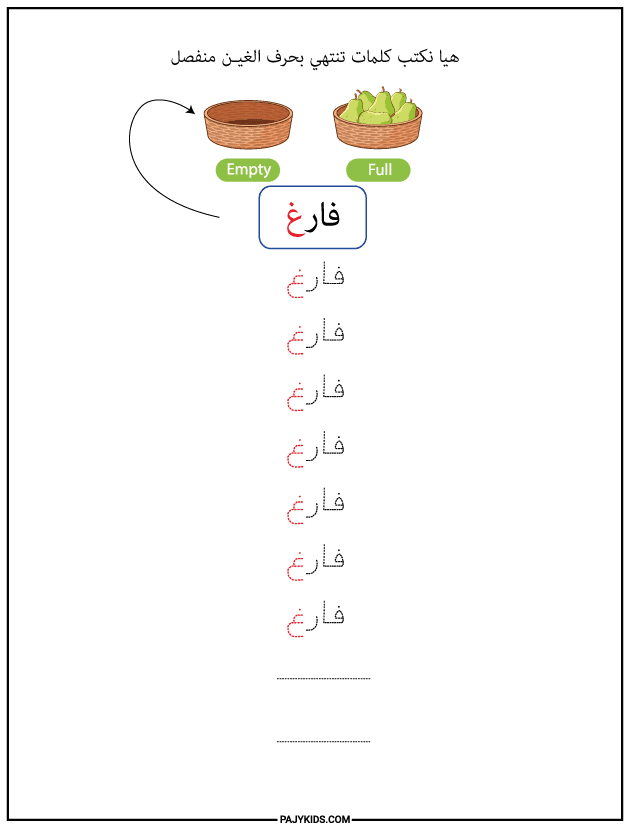
Mastering the forms of the letter Ghain in all its positions significantly enhances a student’s reading and writing abilities. It also aids in distinguishing it from the similar letter Ain, which differs only by the absence of the dot. Regular practice of writing Ghain in various realistic contexts builds students’ confidence and develops their Arabic language skills in a systematic and effective manner.